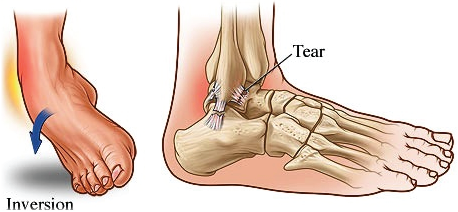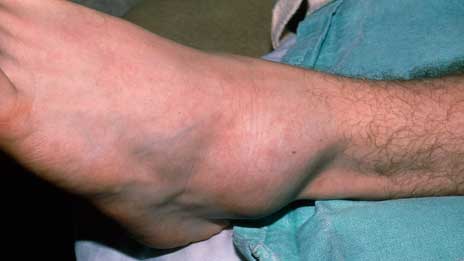 Have you ever sprained, rolled, or twisted your ankle?
Have you ever sprained, rolled, or twisted your ankle?
Who has NOT? *I see no hands in the air*
I know what you're thinking. What the heck does that old middle school ankle sprain have to do with anything? It's been like 15, 20, 30+ years!
Well just like lots of other injuries, surgeries, impacts, traumas, and sometimes just garden variety dings that we sustain over the years, an ankle sprain leaves an imprint on the brain. And it is likely you're still paying a price today.
Let's walk through this (carefully!) for a moment to see how this plays out.
You sprain the ankle...
Ow. Pain. Hurt! Wait, it doesn't hurt... I can keep running!
Then later:
Sometimes you can just walk it off, other times you'll need crutches and rehab. Depends on the severity.
Either way, most of the time, you're back in action in a matter of days or weeks – especially if you care for it right. Soon enough, you've forgotten all about it. You probably think you're walking normally, the way you used to.
BUT WAIT.
As soon as the injury happened, your amazing motor control center in the brain recognized the situation and immediately turned the volume knob of neural drive down on any part of your body that could potentially make the injury worse. Think big, power producing muscles like glutes and quads, for example.
Simultaneously, as you hobbled around, the brain cranked up the volume knob of neural drive to other ligaments and muscles in order to help you compensate. For example, it may rely excessively on the ligaments on the opposite of the sprain to help stabilize the ankle.
**Moment of gratitude for how amazing our body is that even with an injured ankle, we can still very quickly come up with a movement strategy that will allow us to walk.**
Here's the Problem Most People Overlook
The part of your brain that controls movement wants to be darn sure that it can trust whatever tissues are about to get loaded. And even though that ankle sprain from 10 years ago hurts not one iota, the compensation pattern generated to survive the injury likely still persists to some extent.
I can assure you that if you've sprained your ankle (especially if it was severe) the brain still doesn't trust that ankle 100% ...and that's a huge problem!
If the ankle isn't 100% trusted, it is like a giant parking brake to your running.
As the brain guards against you experiencing full-on pronation (loading), which is necessary to experience full-on supination ('exploding'), your muscles will tighten excessively to prevent that action from occurring. If you can't load, you can't explode. Your performance is reduced. It may take 15 years (like it did in my case), but eventually pain is a likely outcome if you keep training – depends how good a compensator your are ;-)
You may experience chronic pain symptoms like plantar fasciosis, shin splints (medial tibial stress syndrome), knee pain, back pain, and even jaw or neck pain. Really, the pain could be anywhere!
**As a coach and trainer, I don't treat pain; rather, I'm going to look for and address the non-painful issue (in this case, the ankle) which could be the root cause.
Now What?
Ideal scenario: you'd get assessed by someone trained in Neurokinetic Therapy® or P-DTR to determine if and how an old ankle sprain is still causing you to compensate in a meaningful way. You'd then want to work with an Anatomy In Motion practitioner to help you restore proper gait mechanics.
If you're near Philly, come visit - I utilize both NKT and AiM! :-)
Using Neurokinetic Therapy®, we're going to assess the function of ligaments around the ankle and how they are impacting muscles and posture throughout the body. You'll be blown away by how many parts may be affected!
Once we've determined what's compensating for what and made the corrections, you'll then need to experience proper pronation - which is more than just an ankle/foot movement; it's a full body movement. The gait phase work taught by Anatomy In Motion is priceless for gait retraining and I use it every day in my own training.
3 Take Home Points:
The answers are out there. If you worked with someone in the past and an issue is still bothering you, don't give up!
Just because you feel pain at the x,y, or z joint doesn't mean that's where your problem is located. Pain site rarely = problem site.
If you've ever sprained your ankle, consider it as a possible player in your current situation – even if it happened decades ago!

